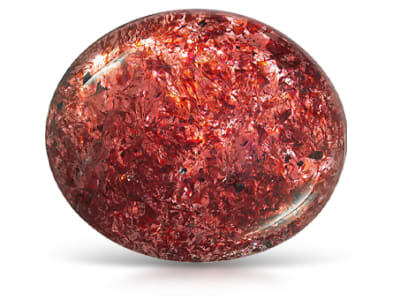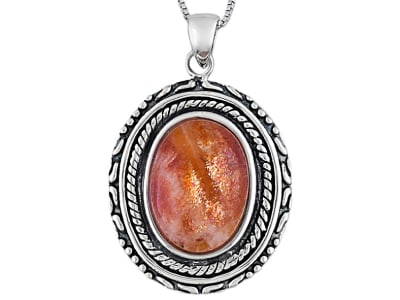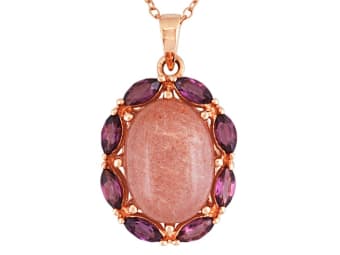Sunstone is a phenomenal variety of feldspar that exhibits a glittery metallic display known as aventurescence. The Oligoclase and Orthoclase feldspar varieties contain hematite and ilmenite platelets that catch the light. Labradorite feldspar, better known as Oregon Sunstone, and labradorite-bytownite feldspar from Ethiopia have tiny copper platelet inclusions that cause schiller or adventurescence. Sunstone often appears coppery to reddish brown but may also appear yellow, orange, red, and green to blue green, with numerous shades possible.
General Information
LWUV: Inert
Sunstone Colors
-
 Bi-color
Bi-color -
 Brown
Brown -
 Colorless
Colorless -
 Green
Green -
 Multi-color
Multi-color -
 Orange
Orange -
 Red
Red -
 Yellow
Yellow
Alternate Names
Oregon Sunstone; Aventurescent Feldspar; Orthoclase Sunstone; Star Sunstone; Oligoclase Sunstone; Labradorite Sunstone
Countries of Origin
Tanzania, United Republic Of; Colombia; Unknown; China; United States of America; Brazil; Mexico; South Africa; Congo; Germany; India
Care
Normal, gentle handling. Avoid ultrasonic cleaners.
Species/Variety
Sunstone (Labradorite)
Labradorite sunstone was only thought to be found in Eastern Oregon until 2015 when a variety labradorite-bytownite feldspar was discovered in the Afar region of Ethiopia. The three Oregon mines are the Dust Devil, Ponderosa and the Sunstone Butte. Stones can be near-colorless, green, red, yellow or combinations of these colors. The stones have tiny copper platelet inclusions that cause schiller or adventurescence.
Sunstone (Oligoclase)
Oligoclase sunstone contains hematite platelet inclusions that catch the light. Oligoclase sunstone is called "aventurescent feldspar" when inclusions are large and produce sparkling reflections. India is a source for this type of sunstone. Oligoclase sunstone will have a slightly higher refractive index 1.539-1.547 than Orthoclase sunstone 1.518-1.526.
Sunstone (Orthoclase)
Orthoclase sunstone is one of the aventurescent feldspar varieties. Some of the best orthoclase sunstone comes from the Hart’s Range area in Australia. In the trade this material is called “rainbow lattice sunstone”. This material contains hematite and ilmenite platelets and shows rainbow interference colors. Oregon also produces “Oregon Cinnamon Sunstone” that contains hematite platelets. Orthoclase sunstone will have a slightly lower Refractive index than the oligoclase variety of sunstone.





